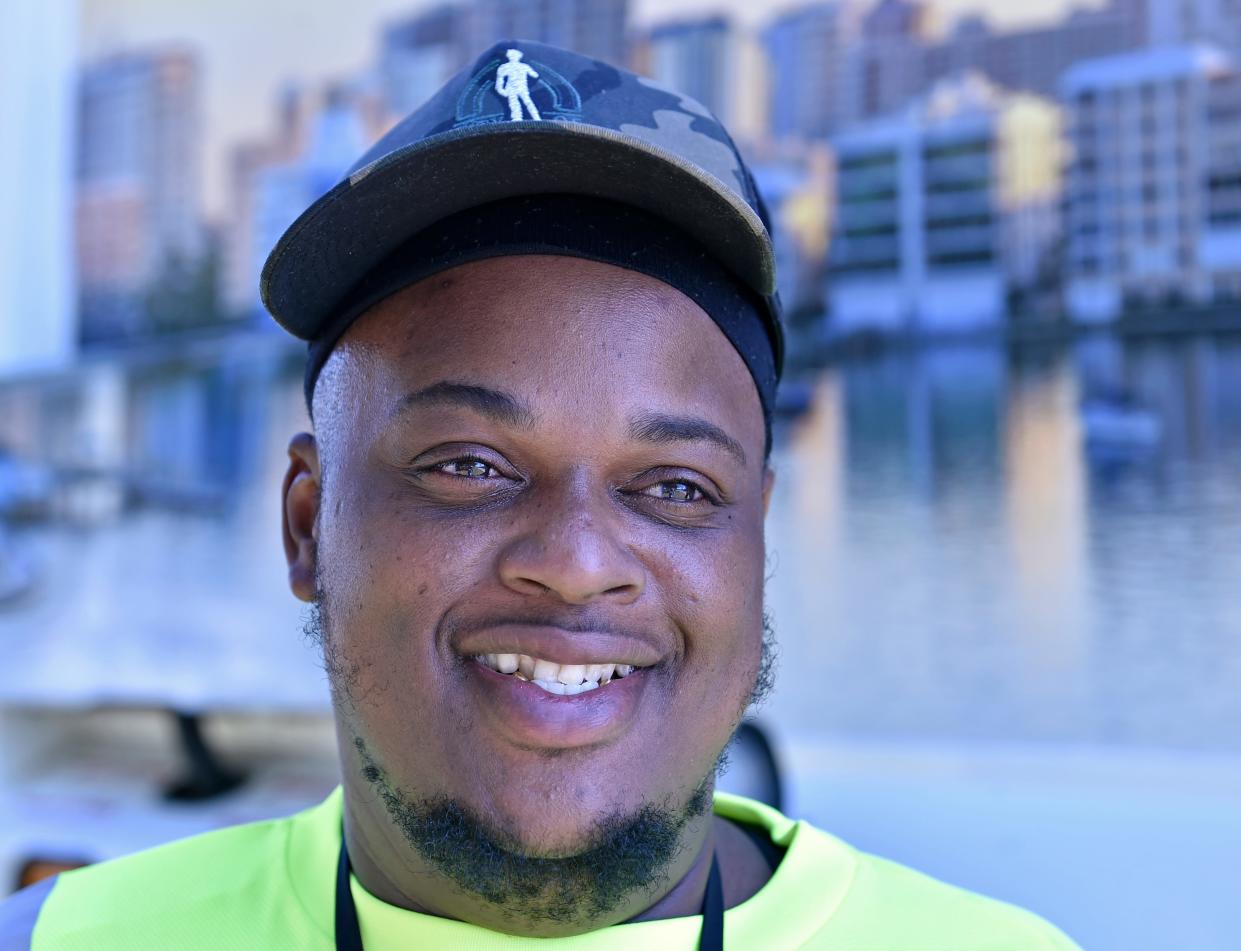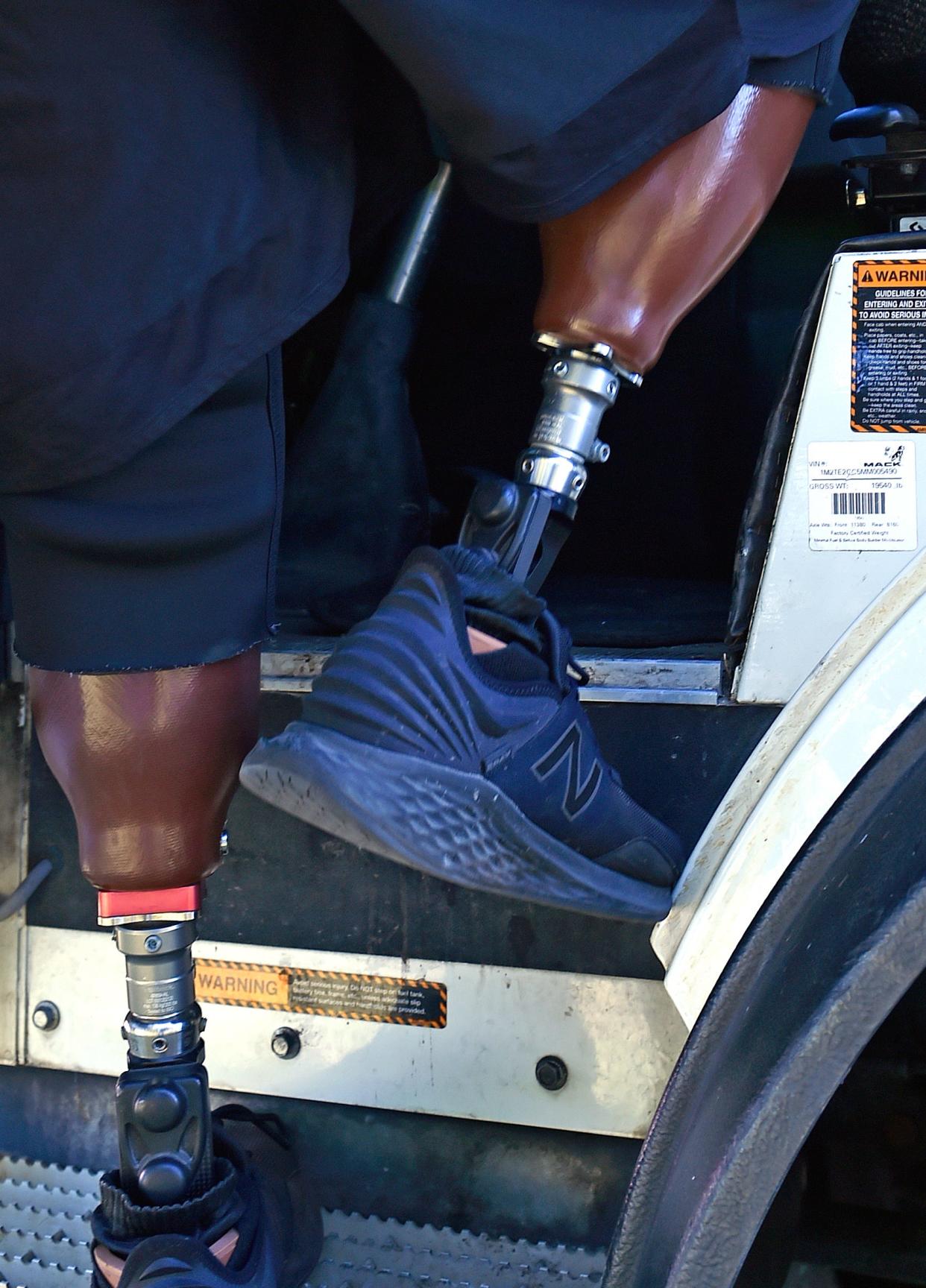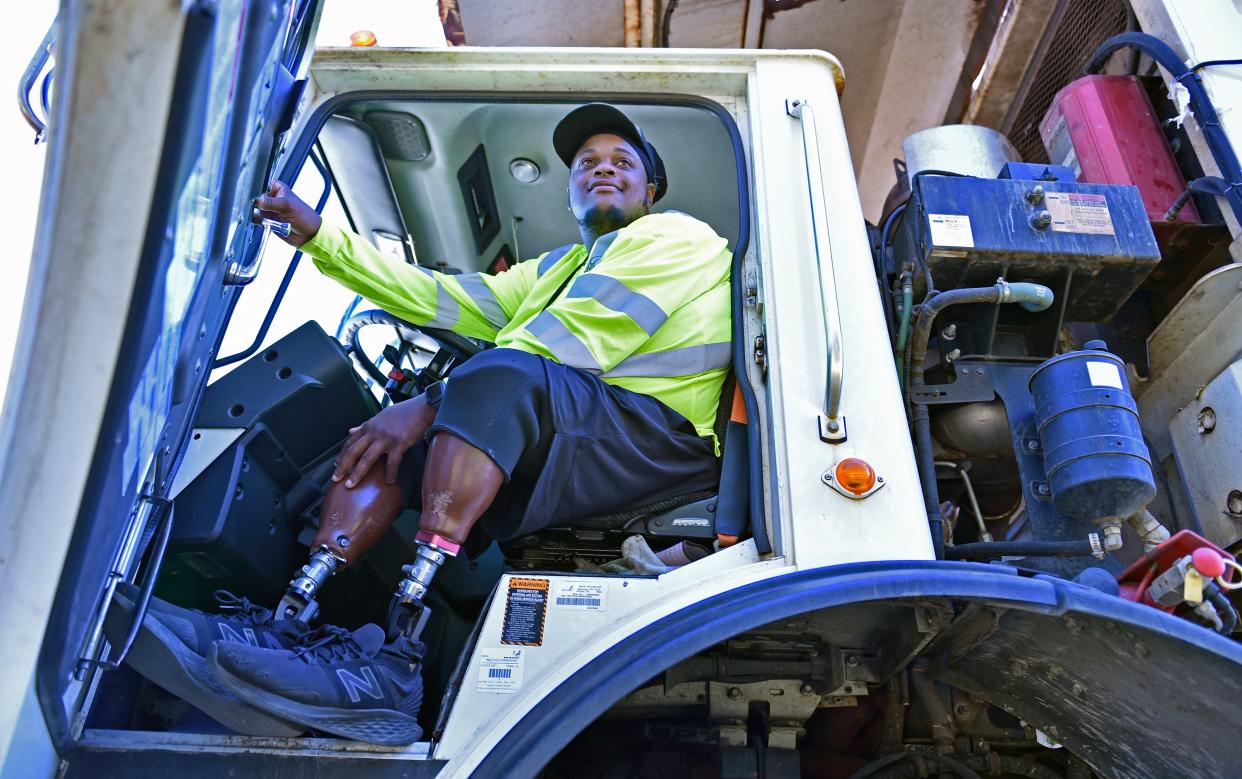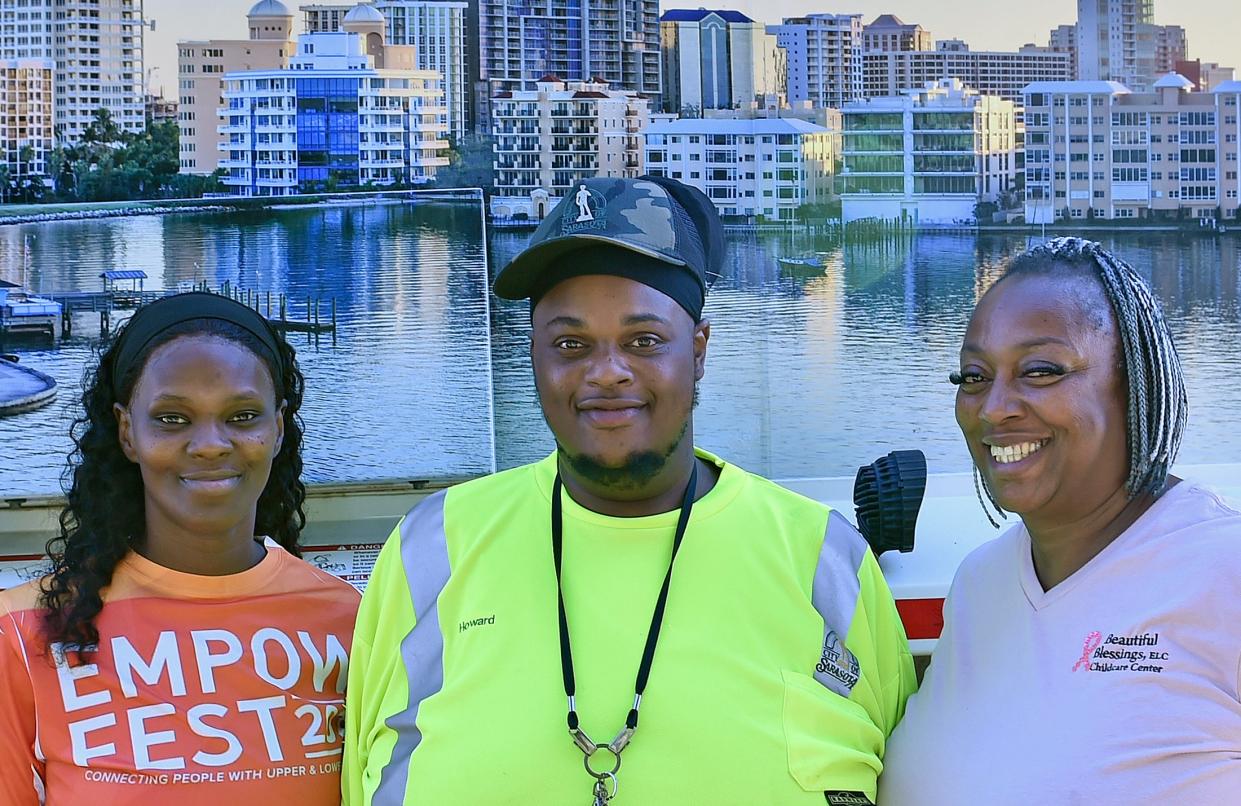The choice: Amputate your arms or legs? Sarasota man overcomes post-COVID challenge

Howard Young is a father of four, a husband, and an employee of the city of Sarasota's Public Works Department. He grew up in Sarasota and is a former student-athlete who played football at Booker High School and was a shot putter for the track and field team before graduating in 2006.
Young is also a fighter.
As a Type II diabetic, Young has lived with the common but complicated health diagnosis for years. He’s among the estimated 2.4 million Floridians who live with diabetes. According to a recent Florida Department of Health study, about 5.8 million others are prediabetic in the Sunshine State.
Despite years of knowledge and successful management of his diabetes, Young was not as prepared for a life-altering health setback in the fall of 2020 during the second wave of the COVID-19 pandemic. As part of fight for survival, he became part of the significant portion of Black and Hispanic people with diabetes who disproportionately undergo limb amputation.
As Young's life has been transformed, he's also helping Sarasota change, toward becoming a more accommodating place for people with disabilities.
“It has been rough, I felt so alone. I've tried to do everything for everybody ... I was the provider of my household, and I started asking God 'Why me?' I couldn't catch things up I was so behind.
"I still have medical bills, but I am just taking it all one day at a time.”
Fight for life
“I caught COVID pneumonia,” Young said of his bout with the virus three years ago. “I was pretty sick, but they sent me home after the first night because they said I was okay. So I went home."
A day after his discharge, Young returned feeling worse, an experience shared by others early in the pandemic, he recalled.
"I could hardly sit up, I couldn't breathe and I kept getting choked up so that time they admitted me. It was a long process. I was in the hospital for almost half the year... My body was so infected with the COVID and the pneumonia."
Due to his underlying condition, the infection had quickly spread, complicating his recovery. The medical staff informed Young and his wife that not only would he need to undergo a medically induced coma to allow his body to fight the infection but that both his feet would need to be amputated to assist the recovery.
While he was sedated for 10 weeks, Young said he could hear the voices of his wife Katrece, his mother, and his fellow coworkers. When Young emerged from the coma, his arms and his legs above the ankle were black, he said.
Soon after, the medical staff informed Young and his wife that another amputation would be needed to remove the infection, and asked him to make a decision to amputate a set of his limbs.
"I never thought I was going to get sick because I keep on top of my diabetes really well. We never had a conversation about it," he said.
Sarasota surgeon Dr. Ryan Suplee performed a double amputation of Young’s legs, removing the infection and his limbs below both knees.
When Young was awakened the second time, the gravity of his condition weighed heavily on him. Knowing the difficult road ahead, not only to gain his independence and mobility but to also return to his position as a refuse operator, Young said he initially felt depressed and defeated.
“I kept forgetting I had my legs amputated,” Young said.
“I’m only 36, there’s a lot of stuff I want to do, but I couldn’t get up to go to the bathroom. I had to train my mind to be more positive and more open to other things. I was angry at first. I don’t know why I was just angry, but eventually, I showed up to work and just worked every day,” he said.
Disparity in amputees is highest among Black patients

Now living and working as a double-leg amputee, Young is one of tens of thousands who account for a significant health disparity affecting Black and Hispanic patients.
Approximately 30,000 Florida patients undergo a diabetes-related amputation each year. Most of those procedures, medical experts contend and studies show, are performed on Black patients.
Medical expert and researcher Sanford Roberts has studied the disparity in amputations and its correlation to diabetes for years. The disparities and preventive care are so pronounced that Roberts co-founded The Would Company earlier this year to raise awareness and address the gap, in part by offering more preventive care.
“It is much more prevalent than people think,” Roberts said. “I feel a responsibility to help minority patients and care about these issues.”
Though his practice is based mostly outside of Florida, Sanford says the disparity affects Florida and persists across the country. Black patients are three times more likely to undergo major extremity amputations than white patients or non-Black patients, studies show.
“I see it day after day. There are many things that play into this disparity. Structural issues, complex issues surrounding insurance, issues with transportation and childcare, and of course there is implicit bias in medical practices. Black and Hispanic patients don’t get as much preventive care,” Sanford said.
A truckload of support for Howard

For the past five years, Young has grown to call his coworkers and team leaders an extended family. When he returned to work at the end of 2021, Young was placed in an administrative role while he gained the strength to return to the waste pickup routes he once handled. His coworkers said it has been an eye-opening experience over the past two years to see Young’s progress through his long recovery.
“Having him come in just lit everybody up,” said Todd Kucharski, the Public Works general manager. “To have him go from the wheelchair to walking down the hallway was incredible. We talked about giving himself some grace throughout the months, but sometimes you could tell Howard just wanted to get up and start running.”
Despite bouts of frustration with his body and learning to navigate with his prosthetics, Young continued to work his way back into a truck. As a tribute to Young’s health journey and his impact on the city, he was recognized by Sarasota commissioners on Oct. 16 as part of National Disability Employment Awareness Month, which is celebrated each year in October.
Young hopes to help other amputees in the community.
“This is a tool I can use to help the next person. It’s just another hurdle; it’s about how you take on the hurdle,” Young said. “I wanted to feel a part of the team just like everybody else and I told them don’t treat me like I’m handicapped, I don’t have a handicap.”
Now that he’s back doing what he loves, Young continues to work to pay off his approximately $12,000 medical debt from his procedure, he says. However, he’s most looking forward to checking things off his bucket list in the near future.
That list includes one day taking his wife, children and mother for a week-long cruise, seeing a Florida Gators football game at the Swamp and continuing to provide for his family.
City of Sarasota tackles ADA compliance

City officials had already taken notice of the challenges faced by those with disabilities in the community. It hired Jake Brown, the city’s first coordinator to help the city comply with the federal Americans with Disabilities Act.
Brown, who lives with an invisible disability himself, says the role was overdue for the municipality and that he is excited about creating much more inclusive spaces for city residents and visitors.
In his work, along with city officials, Brown has created the City of Sarasota ADA Transition Plan, a multi-year strategic plan to will update accessibility in and around city-owned spaces.
Currently, the ADA plan includes a comprehensive update of 56 parks and trails, 176 linear miles of sidewalks and public rights-of-way and 10 city facilities including City Hall, the Van Wezel Performing Arts Center, Robert L. Taylor Community Complex, Arlington Park and Payne Park.
The city is poised to spend approximately $32 million to address a number of ADA issues such as light switch heights, door positions, bathroom spaces and amenities and additional ramps and elevator accesses.
Lido Beach will receive get the installation of a Mobi-Mat, an ADA-compliant beach access walkway for wheelchairs, which will arrive in January.
"To feel and see the difference I’m making in the community helps me feel motivated and fulfilled," Brown said. "It has been a wonderful experience, and the city has been so accommodating to me, Howard and so many other private citizens. We are working hard to take down some of these barriers people with disabilities face every day.”
Additional recommendations to the City Commission for improvements may be made by the Citizens with Disabilities Advisory Board, which studies improvements to areas "such as sidewalks, buildings, recreational facilities and parking.
For additional information about ADA compliance, the comprehensive plan or to speak to a city official about disability needs contact Brown at jake.brown@sarasotafl.gov.
This article originally appeared on Sarasota Herald-Tribune: Sarasota man illustrates a health disparity for Black Floridians
